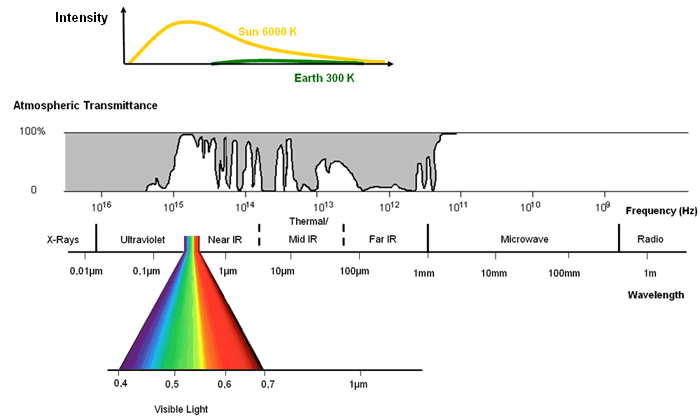1. Physical Basics
The electromagnetic spectrum
Light and its colours and the invisible infrared and ultraviolet are only some forms of electromagnetic radiation. The human eye can only see the part of the electromagnetic spectrum, which contains the spectral colours; but our skin can also sense temperature differences which arise from invisible radiation.
Electromagnetic radiation is one form of energy propagation. It is characterised by intensities at different frequencies or wavelengths. The radiation spreads with the velocity of light (more about frequency, wavelength and the velocity of light can be found in the tutorial Understanding Spectra from the Earth).
An electromagnetic spectrum is depicted by an intensity as a function of the frequency (given in Hertz) or the wavelength (given in micrometres, millimetres or metres), see figure below.
The electromagnetic spectrum is divided into several sections starting with a very short wavelength and high frequency range i.e. x-rays (around 0.01 µm). Ultraviolet radiation with wavelengths of 0.1 µm follows. The part of the visible light, which is visible to the human eye, spans from 0.38 µm to 0.78 µm and ranges from the colours violet, blue, green, yellow to orange and red. Beyond this spectral part, one finds the infrared wavelengths followed by even longer wavelengths like the microwaves and radio waves. Infrared wavelengths are divided into near infrared, mid infrared and thermal infrared (more information can be found in the tutorial about Understanding Spectra from the Earth).
Sources of electromagnetic radiation are the sun, the earth with their infrared radiation and also active satellite sensors.

